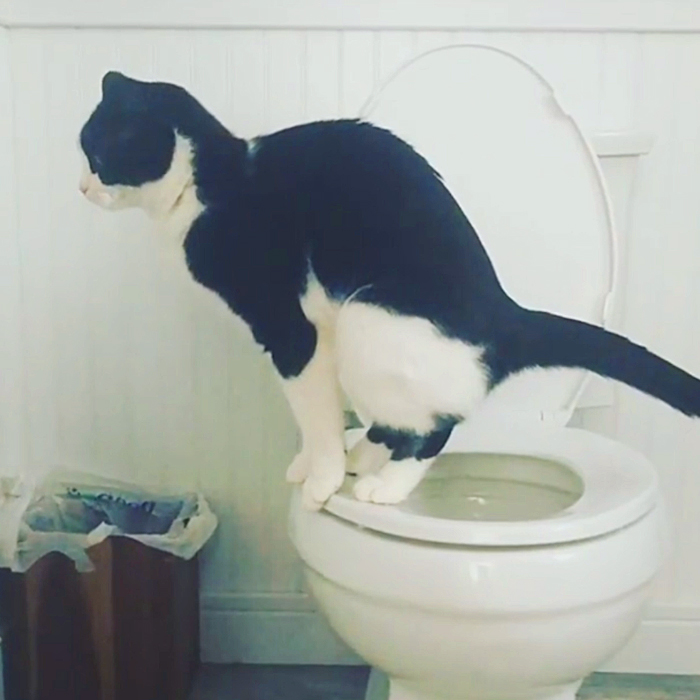We've come across this article involving Don’t flush cat feces down the toilet directly below on the net and figured it made good sense to write about it with you over here.

Intro
As feline owners, it's vital to bear in mind exactly how we take care of our feline pals' waste. While it might appear hassle-free to purge pet cat poop down the commode, this technique can have destructive effects for both the setting and human wellness.
Ecological Impact
Flushing cat poop introduces unsafe virus and bloodsuckers into the water supply, posing a substantial danger to aquatic ecosystems. These pollutants can adversely influence marine life and concession water top quality.
Wellness Risks
Along with ecological concerns, purging feline waste can also posture health threats to humans. Feline feces might contain Toxoplasma gondii, a parasite that can trigger toxoplasmosis-- a possibly severe health problem, especially for expecting females and people with weakened immune systems.
Alternatives to Flushing
Fortunately, there are more secure and a lot more liable means to dispose of cat poop. Think about the complying with options:
1. Scoop and Dispose in Trash
The most typical method of getting rid of feline poop is to scoop it right into an eco-friendly bag and throw it in the garbage. Make sure to use a dedicated litter inside story and get rid of the waste quickly.
2. Usage Biodegradable Litter
Choose eco-friendly feline litter made from products such as corn or wheat. These clutters are eco-friendly and can be securely dealt with in the trash.
3. Hide in the Yard
If you have a backyard, take into consideration hiding pet cat waste in a marked location away from veggie yards and water sources. Make sure to dig deep adequate to prevent contamination of groundwater.
4. Mount a Pet Waste Disposal System
Invest in a family pet garbage disposal system especially designed for feline waste. These systems use enzymes to break down the waste, lowering smell and ecological impact.
Final thought
Liable animal ownership expands beyond providing food and sanctuary-- it likewise involves proper waste management. By refraining from flushing pet cat poop down the toilet and choosing alternate disposal methods, we can reduce our ecological footprint and shield human health.
Why Can’t I Flush Cat Poop?
It Spreads a Parasite
Cats are frequently infected with a parasite called toxoplasma gondii. The parasite causes an infection called toxoplasmosis. It is usually harmless to cats. The parasite only uses cat poop as a host for its eggs. Otherwise, the cat’s immune system usually keeps the infection at low enough levels to maintain its own health. But it does not stop the develop of eggs. These eggs are tiny and surprisingly tough. They may survive for a year before they begin to grow. But that’s the problem.
Our wastewater system is not designed to deal with toxoplasmosis eggs. Instead, most eggs will flush from your toilet into sewers and wastewater management plants. After the sewage is treated for many other harmful things in it, it is typically released into local rivers, lakes, or oceans. Here, the toxoplasmosis eggs can find new hosts, including starfish, crabs, otters, and many other wildlife. For many, this is a significant risk to their health. Toxoplasmosis can also end up infecting water sources that are important for agriculture, which means our deer, pigs, and sheep can get infected too.
Is There Risk to Humans?
There can be a risk to human life from flushing cat poop down the toilet. If you do so, the parasites from your cat’s poop can end up in shellfish, game animals, or livestock. If this meat is then served raw or undercooked, the people who eat it can get sick.
In fact, according to the CDC, 40 million people in the United States are infected with toxoplasma gondii. They get it from exposure to infected seafood, or from some kind of cat poop contamination, like drinking from a stream that is contaminated or touching anything that has come into contact with cat poop. That includes just cleaning a cat litter box.
Most people who get infected with these parasites will not develop any symptoms. However, for pregnant women or for those with compromised immune systems, the parasite can cause severe health problems.
How to Handle Cat Poop
The best way to handle cat poop is actually to clean the box more often. The eggs that the parasite sheds will not become active until one to five days after the cat poops. That means that if you clean daily, you’re much less likely to come into direct contact with infectious eggs.
That said, always dispose of cat poop in the garbage and not down the toilet. Wash your hands before and after you clean the litter box, and bring the bag of poop right outside to your garbage bins.
https://trenchlesssolutionsusa.com/why-cant-i-flush-cat-poop/

I am just very curious about How to Dispose of Cat Poop and Litter Without Plastic Bags and I am praying you enjoyed reading the piece. Sharing is good. Helping others is fun. I treasure reading our article about Can You Flush Cat Poop Down The Toilet?.
Call Today